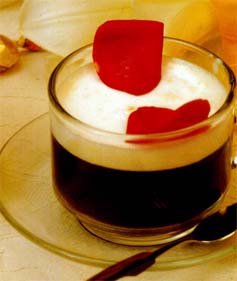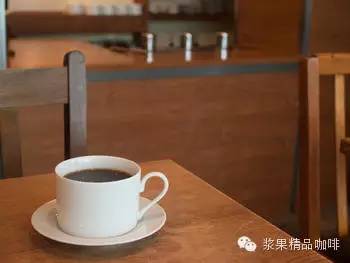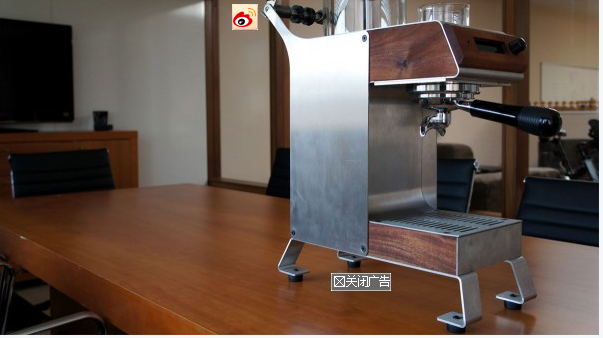What factors affect the kalita of hand brewing coffee
First, the coffee itself.
We make coffee, not orange juice, not green tea, so the coffee itself determines the basic taste of this cup of coffee. For example, whether the coffee is sun-cured or washed, whether it comes from Indonesia in Asia, Colombia in South America, or Ethiopia in Africa. When coffee is certain, the taste in your cup is actually 50% certain. This was the most crucial link.
The second is the degree of grinding and uniformity of coffee
The degree of coffee grinding directly determines the amount of coffee substances extracted during the brewing process. In unit time, the coarser the coffee substance, the harder it is to extract, and the faster the extraction speed, the lighter or stronger the taste. Under normal circumstances, our coffee mill can not be absolutely uniform, after you choose a good thickness, there will generally be a certain proportion of powder that does not meet your requirements, which will increase the layering of coffee taste, and excessive unevenness will make coffee taste "out of control".
Again, the quality and temperature of the coffee.
Water quality varies across the country, and it is generally believed that water quality in the north is not as good as that in the south. John is located in the capital. Although it is the capital, the quality of tap water is nothing special. It is extremely hard. There are sediments such as soda in the boiled water. I have hardly tried to make coffee with such water. I don't think I need to explain too much. Whether such water is good for coffee or not, I don't think anyone needs an answer. So, we have two options for coffee water, tap water, treated water and bottled water. The so-called tap water treatment water is tap water treated by water softener, water purifier or pure water machine. This water can be used to make coffee, and the taste is far better than tap water directly. Another category is the use of purchased mineral water, mineral water, purified water to make coffee. Cost isn't what we're thinking about today, so we can basically default to a more expensive treatment, maybe, we're talking about maybe it's going to taste better. However, here we want to emphasize that "pure" water is not suitable for making coffee, that is, water treated by a water purifier or purchased pure water. This kind of water does not have water alkali, but due to the lack of minerals in the water, the taste of the water itself is lower, and the coffee made with pure water often tastes stiff and lacks a sense of hierarchy. Why is it? I am not a chemist. I really can't say one or two.
On the other hand, water temperature is also an important indicator of coffee taste. When I personally make coffee, I am used to using a water temperature of about 90 degrees, which is of course in line with my grinding thickness. You don't have to be so precise. In fact, you can fix a personal habit, such as standing for 1 minute or 1.5 minutes after the water is completely opened. Of course, you should adjust this time according to the temperature in the room. It is estimated that there will be a temperature difference between winter and summer.
The next important factor is the steeping time of the coffee
This is easy to understand, the longer the soaking time, the more substances will be extracted, and the taste will be about strong, and vice versa. However, what factors will affect the soaking time, let's discuss them in detail.
The first is the degree of coffee grinding, coarse water filtration fast, fine water filtration slow, which we can imagine, filter water fast, unit water naturally coffee and water contact time is short, taste will be weak, and vice versa.
Then is the filter, we commonly used a filter is filter paper, a good filter paper should be no odor, good water filtration. I have used a poor quality filter paper, very thin, but the filtering speed is very slow, only see the water injection, but not the downflow, which inevitably leads to a long soaking time. In addition, common filters include flannel and metal. It is generally believed that these materials have the best filterability, and the disadvantage is that the cost is high and may have the taste of pulp. Flannel is also widely believed to have excellent filtration effect, making coffee taste soft, high alcohol, but repeated use, flannel is easy to absorb the taste of coffee, causing cross-contamination. Finally, metal filters are considered the worst filters and make it difficult to filter out some very fine coffee grounds.
There is also an element that affects the soaking time, which is the method and method of hand flushing water injection. Some friends like to inject water in one breath, that is, uninterrupted water injection, some people like 2 times of water injection, some people like more times of water injection. You can try to count the time separately, you can find that the difference in water injection method can cause a great time difference, that is, the coffee soaking time in water is different. Usually my personal preference for 20 grams of coffee is steeping for about 2 minutes. Of course, if you use an ordinary kettle instead of a dedicated hand rinse pot, it may be difficult for you to control your water volume, and you will not be able to accurately grasp your filling time.
Then there is the proportion of water powder when brewing coffee.
When we make tea, we may all know the most basic truth, if you want to make it thicker, put more tea leaves. The same applies to coffee making. For stronger coffee, we put more coffee powder. However, if we want to make a stable cup of coffee that tastes the same every day, John recommends that we have a standard, or at least a personal, ratio of water to powder. John's personal habit is 20 grams of coffee, water injection 300 ml, that is, powder water ratio of 1:15. Of course, this is also on the premise that I fix the water temperature and grinding thickness. This is a basic universal ratio, which can then be fine-tuned to specific coffee and personal preferences.

Important Notice :
前街咖啡 FrontStreet Coffee has moved to new addredd:
FrontStreet Coffee Address: 315,Donghua East Road,GuangZhou
Tel:020 38364473
- Prev

What factors affect the American flavor of hand-brewed coffee, single coffee and coffee utensils
Coffee itself we make coffee, not orange juice, not green tea, so coffee itself determines the basic taste of this cup of coffee. For example, whether this coffee is tanned or washed, it comes from Asia, Indonesia, Colombia in South America, or Ethiopia in Africa. When the coffee is confirmed, the taste in your cup is actually 50% sure. This is
- Next

The most expensive espresso machine the choice of latte with beans
The Blossom one, designed by two geniuses, comes from a strong background. Kuempel is a former Apple designer, Walliser is an engineer at NASA, and what is even more amazing is that they all have MIT (Massachusetts Institute of Technology) degrees. This highly intelligent lineup is used to design coffee maker blankets. It can be said that Blossom one combines the wisdom of two top engineers, and the actual production
Related
- Beginners will see the "Coffee pull flower" guide!
- What is the difference between ice blog purified milk and ordinary milk coffee?
- Why is the Philippines the largest producer of crops in Liberia?
- For coffee extraction, should the fine powder be retained?
- How does extracted espresso fill pressed powder? How much strength does it take to press the powder?
- How to make jasmine cold extract coffee? Is the jasmine + latte good?
- Will this little toy really make the coffee taste better? How does Lily Drip affect coffee extraction?
- Will the action of slapping the filter cup also affect coffee extraction?
- What's the difference between powder-to-water ratio and powder-to-liquid ratio?
- What is the Ethiopian local species? What does it have to do with Heirloom native species?

